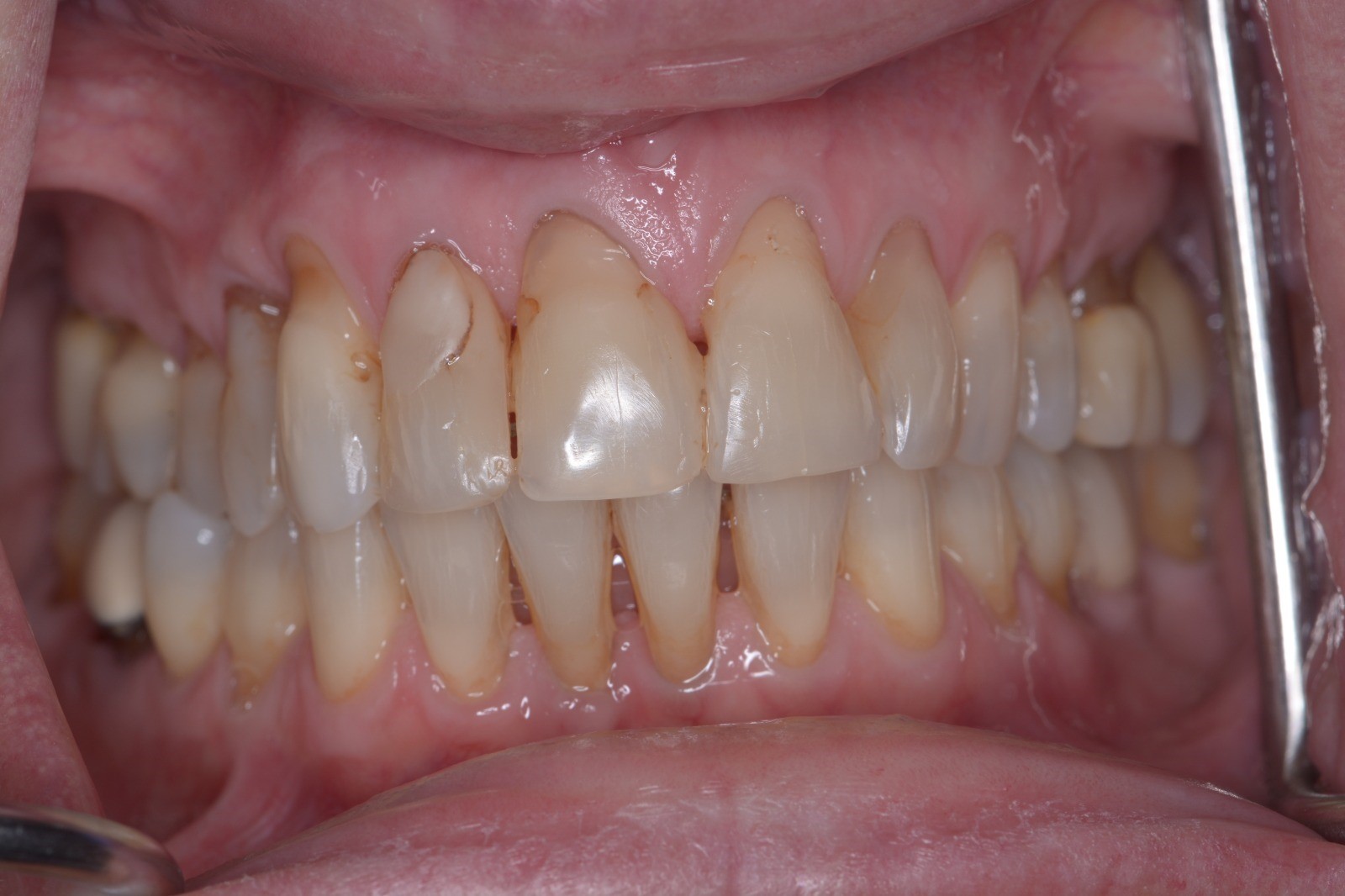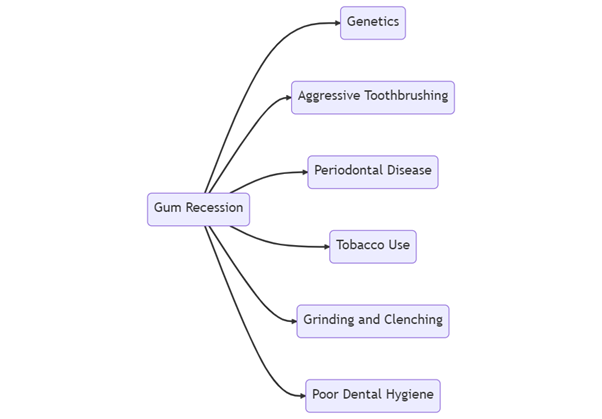

In this article we'll explore the ins and outs of gum recession, its causes, and the treatments available. So, buckle up, and let's dive into the world of gum recession!
Gum recession is the gradual process of gum tissue loss leading to root exposure. It's not only an aesthetic issue, but it can also lead to tooth sensitivity, decay, and even tooth loss. The earlier you detect and address gum recession, the better your chances of saving your precious pearly whites.
Gum recession can result from a wide range of factors, including:

Treatment options include:
Click here to understand the costs of gum disease treatment
Now that you've learned all about gum recession, its causes, and treatments, it's time to take action. Fill in the form below to book an appointment with our friendly and experienced dental team, who will help you put the brakes on gum recession. Remember, a healthy smile is a happy smile, so don't let your gums slip away like a greased pig at the fair!

While gum recession cannot be reversed entirely, treatments like deep cleaning, gum grafting, and regenerative procedures can help restore gum health and prevent further recession.
Maintain good oral hygiene, use a soft-bristled toothbrush, avoid aggressive brushing, and visit your dentist regularly for check-ups and cleanings. Also, try to reduce tobacco use and teeth grinding or clenching.
In some cases, orthodontic treatment can contribute to gum recession, especially if teeth are moved too quickly or if there is inadequate oral hygiene during treatment. However, orthodontics can also help treat gum recession in some instances.
Gum recession itself is not always painful, but it can lead to tooth sensitivity, discomfort, and even pain if left untreated.
Recovery time from gum graft surgery varies depending on the individual and the extent of the procedure. Generally, most patients can return to normal activities within a week or two. Click here to learn more.
Yes, gum recession can be caused by factors beyond oral hygiene, such as genetics, aggressive toothbrushing, and teeth grinding. Regular dental visits can help detect and address gum recession early on.